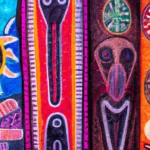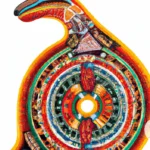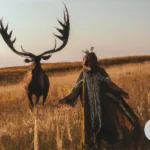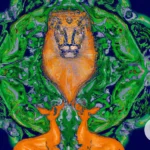Shamanism is an ancient spiritual practice that revolves around the belief in communicating with the spiritual world. One of the most essential aspects of shamanic practice involves connecting with various animals to gain knowledge, guidance, and healing. The role of animals in shamanic practices is crucial and intricate, as animals are considered powerful spirit guides and symbols. In this article, we will explore the various roles that animals play in shamanic practices, including animal symbolism, power animals, animal totems, animal ceremonies and rituals, and healing with animals. So, fasten your seatbelts and get ready to dive into the world of animal spirits and shamanic practices.
Animals as Spirit Guides

Throughout history, animals have been seen as powerful spiritual guides in shamanic practices. According to shamanic beliefs, these animals possess an Otherworldly wisdom that can be used to help guide us along our paths in life. Spirit Guides can come in many forms, including mammals, birds, reptiles, and insects. Each type of animal has unique qualities that may offer guidance and insight in different areas of life. However, it’s important to note that ethical animal use in shamanism is a controversial topic. While some argue that shamanism can help promote wildlife conservation, others believe that it’s important to respect an animal’s autonomy in spiritual practices.
Types of Spirit Guides
Shamans believe that spirit guides can take many forms and can be both animals and non-animals. Animal spirit guides are considered to be the most common type of spirit guide in shamanic traditions. Connecting with spirit guides is an essential part of shamanic practice.
Animal Spirit Guides
Animal spirit guides are the most beloved and well-known type of spirit guide in shamanism. These guides can be any animal, from domestic animals to wild animals. In shamanic practices, certain animals are believed to have particular spiritual qualities that make them powerful guides. For instance, the wolf is often associated with loyalty, strength, and intuition, while the hummingbird is related to joyfulness, positivity, and independence.
Non-Animal Spirit Guides
Shamans also work with non-animal spirit guides, such as elementals, angels, and deities. Elementals are spirits that reside in the natural world, such as the spirits of air, fire, water, and earth. Angels and deities, on the other hand, are supernatural beings that hold symbolic spiritual and moral significance in shamanic belief.
Ancestral Guides
Ancestral guides are the spirits of people who have passed away. They can be ancestors of the shaman or the person they are helping. They may also be spiritual mentors, guides, or helpers. In certain ethnic and cultural traditions, ancestral guides play a vital role in shamanic practice.
Ascended Masters
Ascended masters are highly evolved spiritual beings who have transcended the physical world. They are believed to have reached a state of enlightenment, and they offer guidance to those who seek spiritual growth, wisdom, and enlightenment.
In shamanic belief, all types of spirit guides help shamans in different ways. It is essential to maintain a respectful attitude and integrity towards all of the spirit guides, whether animal or non-animal. If you want to learn more about ethical approaches to working with animals in shamanism, check out ethical animal use in shamanism.
Interacting with Spirit Guides
When it comes to interacting with spirit guides, it’s important to approach the experience with an open mind and heart. Here are some tips for engaging with your spirit guides:
| Tip #1 | Start by setting an intention. Before entering into a shamanic journey or meditation, make it clear that you wish to connect with your spirit guide. Be specific about what you hope to receive from the encounter. |
| Tip #2 | Observe your environment. You never know where your spirit guide might appear. Be mindful of the natural world and pay attention to any animals, plants, or other elements that seem to stand out to you. |
| Tip #3 | Trust your intuition. If you feel drawn to a certain animal or guide, trust that there is a reason for it. Let go of any expectations or doubts, and allow yourself to fully experience the encounter. |
| Tip #4 | Show gratitude. After your interaction with a spirit guide, take the time to thank them for their guidance and presence. This can be done through prayer, meditation, or a simple offering of gratitude. |
Remember, every individual’s experience with their spirit guide will be unique and personal. It’s important to honor and respect the guidance that comes through, even if it may not align with your expectations. If you’re interested in learning more about the intersection of shamanism and animal conservation, check out this article.
Animal Symbolism in Shamanism
Animal symbolism in shamanism is a complex topic with rich meanings. It involves the interpretation of animals as arch types with spiritual significance in shamanic practices. In shamanism, each animal is believed to possess certain qualities and characteristics that can aid shamans and individuals in understanding their needs and desires on a spiritual level. Common animal symbols in shamanism include the wolf, bear, eagle, and deer. The wolf typically represents strength and loyalty, while the eagle represents courage and vision. Understanding the meanings and significance of animal symbols in shamanism can provide individuals with powerful insights and guidance on their spiritual journey. For more information, check out the animal-based shamanism section on our website.
Common Animal Symbols
There are several animal symbols commonly associated with shamanism. These animals are revered for their innate qualities and characteristics which are believed to be powerful in transforming one’s life. Here are some of the most common animal symbols in shamanism:
| Animal | Symbolism |
|---|---|
| Wolf | Strength, loyalty, intuition, and the pathfinder or teacher in shamanic practices. |
| Bear | Power, healing, courage, and rebirth. |
| Buffalo | Abundance, manifestation, gratitude, and prayer. |
| Hummingbird | Joy, love, beauty, and the ability to heal. |
| Owl | Wisdom, intuition, insight, and the ability to see the unseen. |
| Snake | Rebirth, transformation, healing, and shedding of old patterns. |
| Eagle | Clarity, vision, wisdom, and the messenger to the spirit world. |
| Horse | Freedom, grace, power, and stamina. |
| Butterfly | Transformation, growth, beauty, and the ability to transform and evolve. |
Each animal symbol in shamanism carries a unique significance and is believed to have a spirit that guides and mentors individuals in search of healing and spiritual guidance.
To learn more about animals and shamanism, check out this article on Animal Communication in Shamanism.
Meanings and Significance
In shamanism, animals represent more than just physical beings; they also symbolize different qualities and traits that can guide individuals in their spiritual practices. The meanings and significance of animal symbols vary depending on the culture and the spiritual beliefs of the shaman.
Bear symbolizes strength, introspection, and power. It is a powerful spirit animal that can help in healing, protection, and transformation.
Wolf symbolizes loyalty, instinct, and communication. It is a social animal that values teamwork and can teach shamanic practitioners to work together to achieve a common goal.
Deer symbolizes gentleness, grace, and sensitivity. It can teach individuals to be more aware of their surroundings and to listen carefully to their intuition.
Owl symbolizes wisdom, intuition, and magic. It is a nocturnal animal that can help individuals in their spiritual journey by guiding them through their subconscious mind.
Raven symbolizes creativity, change, and knowledge. It can help individuals let go of their old ways and welcome new beginnings.
The significance of animal symbolism in shamanism lies in the belief that animals possess certain qualities and energies that humans can tap into to enhance their spiritual practices and personal growth. By incorporating animal symbols into their spiritual journey, shamanic practitioners can gain a deeper understanding of themselves and their place in the world.
It is important to note that while some shamanic practices involve animal sacrifice, this is not a common or necessary aspect of shamanism. Many shamanic practitioners believe in the importance of respecting and preserving the natural world and its inhabitants.
With a greater understanding of the meanings and significance of animal symbols in shamanism, individuals can incorporate their qualities into their daily lives and spiritual practices for greater personal growth and connection to the natural world.
Link: Shamanism and Veganism: Ethics and Spirituality
Power Animals
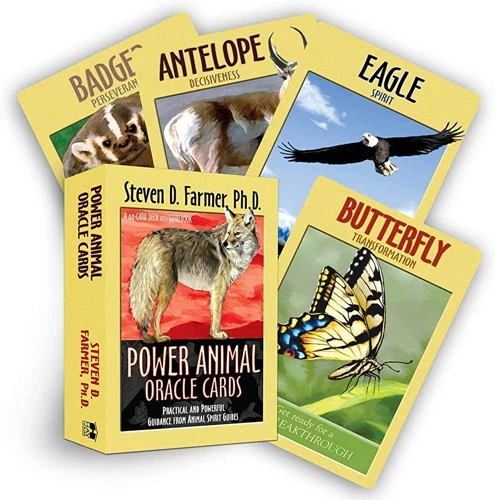
Power animals are a fundamental aspect of shamanic practices. Defining power animals can be a challenging task as they differ based on individual beliefs and experiences. Generally, they are animal spirit guides that provide guidance, support, and protection to the shaman during spiritual journeys or everyday life. Finding your power animal usually involves meditation, dreaming, or sensory experiences that result in the appearance of a specific animal symbol. Working with your power animal requires building a relationship based on mutual respect, trust, and communication. They can not only offer wisdom and insight but also help in physical and emotional healing. In fact, some shamanic practitioners use animal-assisted healing practices where power animals or real animals are incorporated for healing purposes. Others believe that power animals represent animal reincarnations or totems passed down through generations. Whether seen as metaphysical helpers or physical embodiments, power animals play an essential role in shamanic practices.
Defining Power Animals
Power animals are a critical component of shamanic practices. These animals are considered to be spiritual guides or helpers that can provide insight, protection, and other forms of support to the shaman or spiritual practitioner. Power animals are believed to embody certain characteristics or traits that can be helpful to the practitioner at different stages of their spiritual journey.
Here are some defining characteristics of power animals:
| Feature | Description |
| Animal Form | Power animals can be any animal, from a common domesticated animal to a mythical creature. They can also be an insect, bird, mammal, or reptile. |
| Unique Characteristics | Each power animal has unique characteristics and abilities that can assist the shaman or spiritual practitioner. For example, a bear may be associated with strength and grounding, while a wolf may be associated with loyalty and teamwork. |
| Connection to the Individual | A power animal is typically chosen or revealed to the individual through dreams, visions, or other forms of spiritual communication. The animal is believed to have a unique connection with the individual and to be sensitive to their needs. |
| Symbolic and Literal Meaning | Power animals can have both symbolic and literal meanings. For example, a lion may be associated with courage, but it may also embody the actual lion as a species and the qualities that make it unique. |
| Multidimensional Significance | Power animals are believed to have multidimensional significance. They can provide guidance and support in various areas of life, including spiritual growth, relationships, and personal development. |
In short, power animals are spiritual guides or helpers that can provide guidance, protection, and support to the shaman or spiritual practitioner. They can be any animal and possess unique characteristics and abilities that can assist the individual on their spiritual journey. Power animals are chosen or revealed through spiritual communication and can have symbolic and literal meanings that apply to various areas of life.
Finding Your Power Animal
Finding your power animal can be a powerful experience that connects you to a source of guidance and strength. Here are some steps to help you discover your power animal:
- Start with intention: Set the intention to connect with your power animal. Be open and receptive to receiving messages and guidance.
- Pay attention to dreams: Your power animal may reveal itself to you in your dreams. Keep a dream journal and pay attention to animals that appear.
- Observe nature: Spend time in nature and observe the animals around you. Pay attention to which animals seem to appear more frequently or have a special significance to you.
- Meditate: Use meditation to quiet the mind and connect with your inner wisdom. Ask to connect with your power animal and be open to what comes up.
- Ask for guidance: Ask the universe, your spirit guides or other higher power for guidance in connecting with your power animal.
Remember, your power animal may not always be the animal you expect or want it to be. Be open to the messages of any animal that comes to you and trust that it has come to guide and support you on your path.
Working with Your Power Animal
Working with your power animal can be a transformative experience that can profoundly impact your spiritual journey. Here are some steps to get started:
- Connect with your power animal: Spend time in meditation or journeying to connect with your power animal. You may also have dreams or synchronistic encounters with the animal in your everyday life.
- Learn about your power animal: Research the traits and behaviors of your power animal to gain a deeper understanding of its symbolism and significance.
- Communicate with your power animal: Once you have connected with your power animal, communicate with it through meditation or prayer. Ask for guidance and insight during challenging times or important decisions.
- Integrate your power animal: As you deepen your relationship with your power animal, consider incorporating its qualities and traits into your daily life. This can help you tap into its wisdom and guidance on a regular basis.
- Honor and thank your power animal: Show your gratitude and appreciation for your power animal by offering it gifts, such as tobacco or crystals, or performing a ceremony in its honor.
Remember, working with your power animal is a personal practice and can look different for everyone. Trust your intuition and allow your relationship with your power animal to unfold organically.
Animal Totems
Animal totems are powerful symbols in shamanic practices that represent qualities and abilities that guide us on our spiritual journey. Understanding the meaning of animal totems can provide insight into our own nature and help us connect with the spiritual world. There are many ways that animal totems can be utilized for guidance, such as through meditation and dream work. Discovering your animal totem can be done through recognizing patterns or consistently encountering a particular animal in your life. Once you have identified your animal totem, working with it can involve developing a deeper understanding of its characteristics and incorporating these qualities into your daily life. With practice and intention, animal totems can aid in personal growth and spiritual development.
Understanding Animal Totems
Animal totems are a significant aspect of shamanic practices. They are considered to be spiritual emblems or symbols that embody the traits and characteristics of an animal. Totems represent the unique connection that a person has with a specific animal, and they offer profound insights into the individual’s persona and life path.
To understand animal totems, one must familiarize themselves with the basics of shamanic practices. Shamanism is an ancient practice that involves communicating with the spiritual realm to access guidance, wisdom, and health. Animals are viewed as spiritual beings in shamanism, and each has its unique spirit medicine.
The concept of animal totems comes from Native American shamanism, but variations of totems are found in many cultures and traditions worldwide. In shamanic terms, a totem is either an animal spirit guide or an animal who appears to offer guidance or protection.
Animals are believed to possess a specific spiritual energy or essence that can influence human lives positively. They are viewed as messengers or intermediaries between the natural world and the spiritual realm, communicating important insights about one’s destiny or journey.
Animal totems can be discovered through various methods. One way is by self-reflection on your personal characteristics and traits, matching them with the corresponding animal totem’s characteristics. Another way is by meditation or journeying to explore the spirit world, and the animal chosen by the unconscious mind is the totem animal.
Each animal totem holds its symbolism, traits, and characteristics, which can be understood through research and reflection. They are often associated with personality traits that the individual embodies and can offer insights into one’s strengths and weaknesses.
Understanding animal totems can lead to profound self-discovery and guidance in one’s life journey. Totems are believed to offer protection, guidance, healing, and even warning signs, and it’s important to honor and respect them.
| Animal Totem | Meaning |
|---|---|
| Bear | Strength, courage, healing |
| Butterfly | Transformation, growth, renewal |
| Deer | Gentleness, grace, compassion |
| Eagle | Vision, clarity, freedom |
| Snake | Rebirth, transformation, healing |
Animal totems vary across cultures, and their meanings can be interpreted differently depending on individual experiences. It’s essential to find the totem animal that resonates with you the most and honor its energy. By working with your animal totem, you can discover new insights and gain deeper spiritual connections with the natural world.
Discovering Your Animal Totem
Discovering your animal totem can be a profound experience that can help you gain insight into your own psyche and the world around you. Here are some ways to discover your animal totem:
| Meditation and Journeying |
|---|
| One of the most common and effective ways to discover your animal totem is through meditation and journeying. Set your intention to discover your animal totem, then enter into a meditative state or listen to a guided shamanic journey. Be open to whatever animals appear to you. You may see the animal in your mind’s eye, or you may have a physical sensation or sign that relates to the animal. |
| Dreams and Visions |
| Pay attention to your dreams and visions. Your animal totem may make an appearance in your dreams, or you may have a waking vision of the animal. Keep a dream journal and record any animal symbols or encounters you have in your dreams. |
| Nature Observation |
| Observe the animals that you encounter in nature. Whether it’s a bird flying overhead or a squirrel scurrying past you on a hike, pay attention to any animals that catch your attention. You may even notice that certain animals seem to appear frequently in your life. |
| Introspection |
| Take some time for self-reflection and introspection. Think about the qualities and attributes that you admire or desire. What animals embody those qualities? For example, if you desire more courage, you may resonate with the lion or the bear. |
Remember that discovering your animal totem is a personal journey, and there is no right or wrong way to do it. Trust your intuition and be open to the messages that your animal totem brings you.
Utilizing Animal Totems for Guidance
Utilizing animal totems is a common practice in shamanism for seeking guidance and clarity. Each individual has a unique animal totem that provides insight into their spiritual journey and can assist in making decisions in their daily life.
Once an individual has discovered their animal totem, they can begin to utilize its spiritual wisdom for guidance. Meditation and visualization techniques can be used to connect with the energy of the animal and receive messages from it. This can involve closing one’s eyes, taking deep breaths, and envisioning the animal in their mind’s eye.
Animal totems can also be used for divination purposes, such as tarot or oracle card readings. The animal-themed cards can help individuals understand the current energy surrounding them and provide guidance on how to proceed. Additionally, individuals can carry a small token or symbol of their animal totem with them as a reminder of their spiritual connection and guidance.
It is important to note that animal totems are not necessarily fixed entities; they may change throughout an individual’s life or during specific spiritual periods. It is common for an individual to have one main totem but may also work with other animals for additional insight or support.
Utilizing animal totems for guidance can provide a unique and personal spiritual connection that can assist in navigating life’s challenges and decisions.
Animal Ceremonies and Rituals
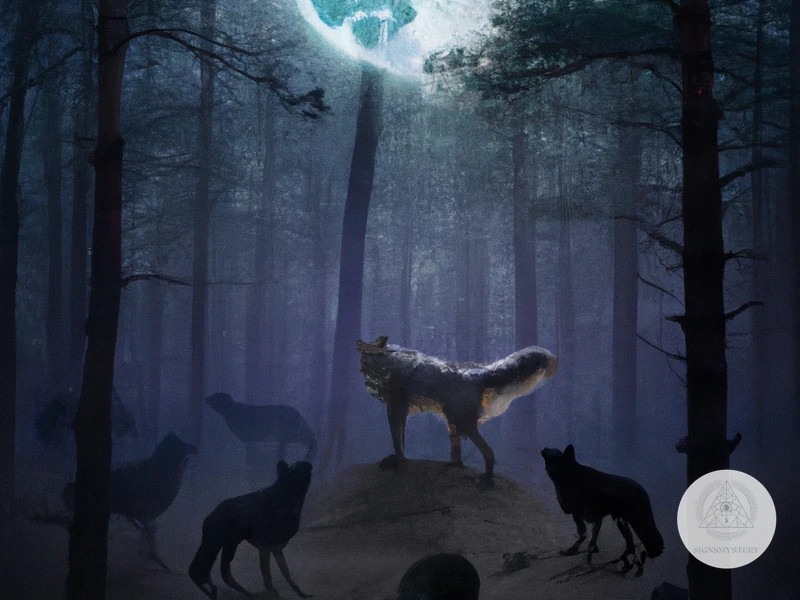
Animal ceremonies and rituals are an essential part of shamanic practices that involve connecting with spiritual energies through animal spirits. These ceremonies and rituals are performed to honor and respect the animals that serve as spirit guides, power animals, and animal totems. There are various types of shamanic ceremonies and rituals that involve animals, such as animal sacrifice, animal spirit dances, and animal-inspired shamanic journeys. In some cases, these ceremonies may involve the use of specific animal parts, such as feathers, bones, or fur, for their symbolic or spiritual significance. It is important to recognize the ethical and moral considerations of animal use in shamanic practices, and to approach these ceremonies and rituals with respect and reverence for the animals involved.
Animal Sacrifice in Shamanism
Animal sacrifice has been a part of shamanic traditions for centuries, and it remains a controversial topic in modern times. In some cultures, sacrificing an animal is seen as a way to honor and give thanks to the animal spirits, while in other cultures, it is viewed as a way to gain power or protection from the spirits.
Shamans may use animal sacrifice to communicate with the spirits of animals and the natural world. For example, during a ceremony, a shaman may sacrifice an animal and then use its energy to connect with the spirit world and gain insight or guidance. The animal’s sacrifice is seen as a sacred act that honors the animal’s spirit and acknowledges the interdependence of all living things.
However, there are also ethical concerns surrounding animal sacrifice, and many people find it controversial and disturbing. Animal welfare organizations have campaigned against the practice, arguing that it is cruel and unnecessary. While some shamanic traditions continue to practice animal sacrifice, others have adopted alternative methods, such as using symbolic objects or performing healing ceremonies without sacrificing animals.
It is
Subscribe to Our Newsletter
Sign up to receive the latest news and updates.
Animal Spirit Dances
Animal spirit dances are a powerful and transformative shamanic practice that involves embodying the energy and movements of an animal through dance. This practice is especially common among indigenous cultures, where dance is considered a powerful form of prayer and communication with the spirit world.
The Benefits of Animal Spirit Dances
Animal spirit dances can have a variety of benefits for those who practice them. These benefits include:
- Connecting with the energy and wisdom of the animal kingdom
- Strengthening the mind-body-spirit connection
- Clearing energetic blockages and releasing negative emotions
- Developing a deeper understanding of oneself and one’s relationship with nature
The Process of Animal Spirit Dances
The process of animal spirit dances varies depending on the culture and specific tradition. However, some common elements include:
- Inviting the energy of the animal to be danced
- Preparing the body and mind through meditation, drumming, or other rituals
- Dancing to embody the animal’s energy and movements
- Offering gratitude and thanks to the animal spirit at the end of the dance
Examples of Animal Spirit Dances
Different cultures have their own unique animal spirit dances. Here are some examples:
| Culture | Animal | Description |
|---|---|---|
| Hopi | Eagle | The eagle dance is performed to ask for blessings of clear vision and spiritual strength. |
| Inuit | Caribou | The caribou dance is performed to celebrate the abundance of the caribou and to ask for a successful hunt. |
| Aztec | Jaguar | The jaguar dance is performed to honor the spirit of the jaguar and to ask for its protection and guidance. |
| Haudenosaunee | Bear | The bear dance is performed as a healing dance and to ask for the bear’s power and healing energy. |
Animal spirit dances are a beautiful and powerful way to connect with the energy and wisdom of the animal kingdom. Whether you are new to shamanic practices or have been practicing for years, animal spirit dances can offer a transformative and profound experience.
Animal-Inspired Shamanic Journeys
Animal-inspired shamanic journeys are a common practice in shamanism. In these journeys, the shaman enters a altered state of consciousness to connect with the spirit of an animal. The spirit of the animal serves as a guide, helping the shaman to gain insight, wisdom and healing.
The Journey
Shamanic journeys involve entering a trance-like state, typically induced through drumming, chanting, or other rhythmic techniques. The shaman then sets an intention to connect with the spirit world and specifically the spirit of an animal. They may visualize a landscape, such as a forest or a desert, and look for signs of their animal guide.
Animal Guides
The animal that appears to the shaman may be a power animal, a spirit animal, or simply an animal that holds symbolic significance. The choice of animal guide is often determined by a person’s needs or intentions. For example, a person seeking strength and courage may be guided by a bear or a lion, while a person seeking creativity and inspiration may be guided by a dolphin or a butterfly.
The Message
The shamanic journey is not just about connecting with an animal spirit guide, but also about receiving a message. The shaman may ask their guide for insight or guidance on a particular issue, such as a relationship or career decision. The animal guide may also offer healing energy or protection.
Integration
After the shamanic journey, the shaman takes time to integrate the experience. This involves reflecting on the message received and how it applies to their life. They may also incorporate the wisdom of their animal guide into their daily practices, such as through meditation or visualization.
Animal-inspired shamanic journeys are an important aspect of shamanic practices. They offer powerful insight and healing by connecting the shaman to the wisdom of the animal kingdom. It is important for those interested in shamanism to practice proper techniques and to approach the practice with respect and reverence towards the animals and their spirits.
Healing with Animals
In shamanic practices, animals are seen as powerful healers and are often used in various healing techniques. Animal-assisted healing practices involve using animals as companions to help people with physical, emotional, and mental health issues. This can include therapies like equine-assisted therapy, dolphin-assisted therapy, and even therapy dogs. Animal spirit medicine involves connecting with the spirits of animals to gain insight and wisdom. This can be done through meditation or other shamanic practices. Animal energy healing is similar to Reiki, where practitioners use the energy of animals to heal themselves or others. Some animals are known to have specific healing properties, like cats with their purring vibrations or horses with their calming energy. By working with animals, individuals can tap into their natural healing abilities and receive support and guidance from the animal kingdom.
Animal-Assisted Healing Practices
Animal-assisted healing practices involve the use of animals to aid in the healing process of individuals with physical, emotional, and mental health issues. Studies have shown that interaction with animals can have positive effects on human health, including reducing stress and anxiety levels, lowering blood pressure, and improving overall well-being.
There are several types of animal-assisted healing practices, including animal-assisted therapy, animal-assisted activities, and emotional support animals. Animal-assisted therapy involves working with a licensed therapist and a trained animal to help individuals with specific treatment goals. Animal-assisted activities involve animal visits to hospitals, nursing homes, and other healthcare facilities to provide comfort and companionship to patients. Emotional support animals are pets that provide emotional support and companionship to individuals with mental health conditions.
Benefits of Animal-Assisted Healing Practices
Animal-assisted healing practices have numerous benefits, including:
- Reduced stress and anxiety levels: Interacting with animals has been shown to reduce levels of the stress hormone cortisol and boost levels of the feel-good hormone oxytocin.
- Lowered blood pressure: Petting an animal has been shown to lower blood pressure, which can reduce the risk of heart disease and stroke.
- Pain relief: Animal-assisted therapy has been shown to reduce pain levels in individuals with chronic pain conditions.
- Improved mood: Interacting with animals can improve mood and reduce symptoms of depression.
- Increased socialization: Animal-assisted activities can help individuals who are socially isolated or have difficulty interacting with others to improve their social skills.
Types of Animals Used in Animal-Assisted Healing Practices
A variety of animals can be used in animal-assisted healing practices, including:
- Dogs: Dogs are the most commonly used animals in animal-assisted therapy and animal-assisted activities due to their friendly, loyal, and trainable nature.
- Cats: Cats are also used in animal-assisted therapy, particularly for individuals who may be intimidated by dogs or have allergies.
- Horses: Equine-assisted therapy involves working with horses to help individuals with emotional, behavioral, and developmental issues.
- Birds: Bird-assisted therapy involves working with birds to help individuals improve their motor skills, cognitive functioning, and social skills.
- Fish: Aquariums are sometimes used in healthcare settings to reduce stress and anxiety levels in patients.
Animal-Assisted Healing Practices in Shamanism
Animal-assisted healing practices have been used in shamanism for centuries. Shamans may work with animals to help individuals heal physical, emotional, and spiritual illnesses. For example, a shaman may use the energy of a particular animal to bring balance to an individual’s energy field or to extract negative energy.
In shamanism, animal-assisted healing practices may also involve working with spirit animals or power animals. These animals may appear in dreams or during shamanic journeys and can provide guidance, protection, and healing to individuals. The shaman may also work with animal spirits during healing ceremonies or rituals to bring about physical, emotional, and spiritual healing.
Animal Spirit Medicine
Animal spirit medicine is a concept utilized by shamans to connect with animal spirits for healing purposes. Shamans believe that animals possess unique qualities and talents that can be harnessed to heal physical, emotional, and spiritual ailments. Animal spirit medicine is based on the idea that humans have an inherent connection to nature, and that animals can serve as powerful teachers and healers.
Animal spirit medicine is often used in conjunction with other forms of traditional medicine, such as herbs, acupuncture, and massage. Shamans may use animal spirit medicine to diagnose illnesses or to facilitate emotional healing. Each animal has its own unique healing properties and can be used to address a wide range of ailments.
Here are some examples of animal spirit medicine and their healing properties:
| Animal | Healing Properties |
|---|---|
| Bear | Strength, courage, grounding |
| Butterfly | Transformation, growth, renewal |
| Dolphin | Joy, playfulness, freedom |
| Hawk | Clarity, focus, vision |
| Snake | Rebirth, transformation, healing |
Shamans may use various tools to connect with the spirit of the animal they are working with, such as rattles, drums, or feathers. They may also use visualization techniques to communicate with the animal spirit. Once they have made a connection, they may ask the animal spirit for guidance or healing energy.
Animal spirit medicine can be used for physical ailments, such as chronic pain or illness, as well as emotional and spiritual issues, such as grief or depression. The healing properties of animal spirit medicine can be integrated into everyday life through the use of affirmations, visualizations, or by carrying or wearing an item that represents the animal spirit.
It is important to note that animal spirit medicine is not a substitute for traditional medical care. It should be used as a complementary therapy to support overall health and well-being. It is always recommended to consult with a licensed healthcare provider before beginning any new treatment.
Animal Energy Healing
Animal energy healing is a practice that involves channeling the energy of animals to promote physical, mental, and emotional health in humans. It is based on the belief that every living creature has a unique energy signature that can be harnessed for healing purposes. Animal energy healing can take many forms, including hands-on healing, meditation, visualization, and breathwork.
One of the most well-known forms of animal energy healing is Reiki, which involves the practitioner channeling energy through their hands to rebalance the client’s energy field. In animal energy healing, Reiki can be performed on animals to help with physical and emotional issues, such as arthritis, anxiety, and stress.
Another form of animal energy healing is using crystals, which carry their own energetic vibrations to promote healing. Crystal healing can be done on pets as well as humans, and each crystal has its own unique properties that can be beneficial for different ailments. For example, amethyst can help with emotional balance, while citrine can promote abundance and prosperity.
Sound healing is another form of animal energy healing, which involves using sound frequencies to promote healing and relaxation. Singing bowls, chimes, and tuning forks can all be used to create vibrations that can help rebalance the body’s energy field.
Animal energy healing can also involve working with spirit animals or animal totems. Different animal spirits are associated with different healing properties, and practitioners can call upon these spirits to support clients’ healing journeys. For example, the spirit of the bear is associated with strength and grounding, while the spirit of the eagle is associated with vision and clarity.
Animal energy healing is a powerful and unique modality that can support healing on many levels. By tapping into the energy of animals, practitioners can help clients to find balance and harmony in their lives. Whether through Reiki, crystal healing, sound healing, or spirit animals, animal energy healing is a practice that can bring profound healing and transformation to those who seek it.
Conclusion
Conclusion:
In conclusion, the role of animals in shamanic practices is vast and varied. From serving as spirit guides to being the inspiration for powerful ceremonies and rituals, animals play a crucial role in the shaman’s world.
Through the use of animal symbolism, power animals, and animal totems, shamans tap into the wisdom and energy of the natural world to gain insight and guidance. These spiritual allies offer a unique perspective and can help individuals navigate through life’s challenges.
Animal-assisted healing practices and animal spirit medicine also highlight the powerful connection between humans and animals. By tapping into the energy of our animal friends, we can access valuable healing and support.
While the use of animal sacrifice in shamanism can be controversial, animal spirit dances and animal-inspired shamanic journeys offer a way to honor and connect with animals without causing harm.
Overall, the role of animals in shamanic practices reminds us of the interconnectedness of all beings and the importance of respecting and honoring the natural world. Whether you are a seasoned shaman or simply curious about these ancient traditions, exploring the role of animals in shamanic practices can offer a profound and transformative experience.
Frequently Asked Questions
1. Can anyone work with spirit animals?
Yes, anyone can work with spirit animals regardless of their cultural or religious background.
2. Do shamanic practitioners always use animal symbolism in their practice?
While animals are commonly used as symbols in shamanic practice, it is not a requirement for all practitioners.
3. Can a power animal change throughout someone’s life?
Yes, it is possible for an individual’s power animal to change throughout their lifetime as their needs and experiences change.
4. Do all animals have symbolic meanings in shamanism?
No, while many animals are imbued with symbolism and spiritual significance in shamanism, not all animals hold such meaning.
5. Can animal ceremonies be performed without sacrificing an animal?
Yes, there are many animal-inspired ceremonies that can be performed without sacrificing an animal. Animal sacrifice is a controversial topic in modern shamanism and should be approached with caution.
6. Can animals be incorporated into traditional medical treatments?
Yes, animal-assisted healing practices are becoming more mainstream in traditional medical settings.
7. Do all individuals have an animal totem?
No, not all individuals have a specific animal totem. Totems are unique to each person and can be discovered through reflection and meditation.
8. Can animals be used for both physical and emotional healing?
Yes, animals have been used in both physical and emotional healing practices for centuries.
9. Does the same animal hold the same symbolic meaning across all cultures?
No, the meanings and significance of animals can vary greatly depending on the culture and context in which they are viewed.
10. Can animal energy be used for protection?
Yes, animal energy can be harnessed for protection in spiritual and energetic practices.



